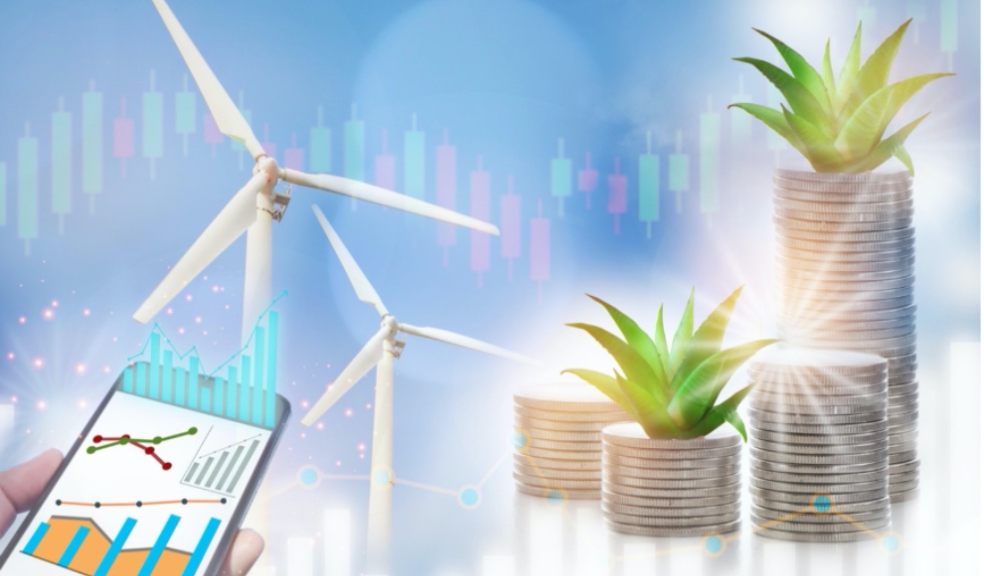
Green energy stocks could be the perfect investment for 2022
It’s no secret – the cost of our energy bills is set to rise in 2022.
Suppliers have to pay more in the market to access gas and electricity, and – as tends to be the way with these things – that cost is passed on to us as customers.
The starker reality is that many countries around the globe are indebted to Russia for their energy supply chain – as their conflict with Ukraine intensifies, and they retaliate to sanctions placed upon them by increasing the price of their gas, the knock-on effect is that, once again, we suffer when paying our bills.
It’s one of the reasons why some world leaders have an appetite for alternative sources of energy and why more and more are considering wind, solar, hydro and other forms of fuel that are both sustainable and not controlled by a small handful of powerful countries and companies.
Consequently, firms that specialise in the supply of green energy sources are likely to enjoy a boom in popularity, and that sentiment is what gets traders hot under the collar. It’s no wonder that plenty are beginning to invest in green energy stocks.
What is green energy?
Green energy sources are naturally occurring and therefore sustainable – unlike finite materials like coal and oil.
Although often termed ‘renewable’, the truth is that not all renewable energy sources are considered green – harvesting and storing hydropower, for example, requires dams to be built in naturally-occurring sources of water, and this industrialisation is the antithesis of the green ideal.
The true green energies don’t produce any pollution in their creation. While some would suggest that wind turbines are a form of visual pollution, the reality is that they take a naturally occurring and infinite resource and transform it into an energy source that does not harm the environment.
How affordable is green energy?
We all like the idea of green energy, being environmentally responsible and contributing to a more resourceful planet, but let’s be honest: the success of green energy as a mainstream commodity will be determined by how expensive it is for the average customer to use.
The good news is that it has been reported that green energy sources will largely undercut many of the entrenched forms of energy in price. Specifically, in the long term, it will be cheaper to produce and refine wind and solar power than coal and gas-based sources – that should manifest itself in cheaper bills for homeowners.
That said, there’s still some way to go before some green energy sources are available to the general public at an affordable price. It costs around £4,800 for the average semi-detached home to be decked out with solar panels, and that’s an expense that the majority of households simply cannot afford.
Should I invest in green energy stocks?
There is plenty of evidence to suggest that governments and big businesses around the globe will tap into green energy. Ultimately, they simply don’t have any other choice in the long term, as the cost of other resources skyrockets due to scarcity and geopolitical insecurity.
And so, the success of the premier green energy suppliers seems a formality – although, as ever, their attractiveness to stock investors goes beyond just demand and looks at how effectively the business is run, its competitors and threats to sustained profitability.
One niche that attracts controversy is nuclear power, given that an atrocity is hard to avert if a nuclear power station blows up – an extreme example, but you get the gist. However, nuclear energy doesn’t need a windy day or a spell of sunshine to be powered, and there’s a train of thought that this will complement other forms of energy in the paradigm shift away from coal and gas.
Determining which green energy firms to invest in will be the subject of much technical and fundamental analysis, but if you aren’t into crunching the numbers, then taking a look at the infrastructure that the company has behind it is savvy.
For example, how does the firm access its green energy? Do they have a monopoly over a particular geographic region (onshore or offshore), or could competition muscle their way onto their turf?
Also, we need to consider how they generate value for their shareholders. Do they sell direct to consumers? Do they use PPAs (Power Purchase Agreement) to source green energy themselves to re-sell, or are they the supplier to PPA clientele?
With all ‘breakout’ industries, it can be hard to fathom which companies will thrive and which will be left behind. But a quick check of the firms’ fundamentals will help confirm the best green energy stocks to invest in for 2022.













